I have worked for the Archdiocese of Paderborn in Westphalia for many years, doing painted wall inscriptions for exhibitions, stained glass for the choir school, monuments for public spaces and even inscriptions for two immense bells for the cathedral carillon. Paderborn was an important residence of the Emperor Charlemagne; and so it seems fitting that the archdiocese, like the emperor, should keep calligraphers busy.
For the last two years they kept me very busy making a new lectionary to replace one written in the 1980s. Accepting this commission put me in a very difficult position. I had not written formal, legible script for many years, and my fingers had run off over the horizon like wild stallions. They needed to be rounded up and taught to behave themselves!
For months on end I sat down, most mornings, to write a decent, simple, contemporary Carolingian hand. You’d think it would be easy for a professional. Not at all! Weeks became months and the letters remained wobbly, the line unstable, the text block crude. I sent writing samples to my good friend Sue Hufton, who worked on the great St. John’s Bible. She gave excellent advice on the minutest points of form, flow, sharpness and freedom. More months went by without much progress.
In November 2019 my wife and I rented a house in Umbria and I shut myself away to write for several hours a day. After a month, I was still not satisfied. Something in the arches, in the o’s, in the s’s simply would not gel. One would be tempted to give up and hire in another scribe.
Back home in Bruges I gave it one more try. Sue sent me quills she had inherited from Sam Somerville, a very great technician. She sent me pencils inherited from our teacher Ann Camp, still sharp as Persian arrows. And she gave me valuable tips on preparing parchment. With these talismans on my desk, the magic finally happened. A flowing Carolingian arrived. I won’t say I am completely satisfied, but (as Gaynor Goffe always said) it will do.
Five weeks to write the 60 pages. Blessed, focused, zen days. Why did I ever stop writing formal scripts? (Answer: the clients wanted something else.) I enjoyed every minute, every letter. And in sixty pages of GERMAN, I only left out one comma and one h! It seems an old dog can relearn an old trick.
The full page paintings followed. Luckily my wife Nadine knows all about form, the human figure and composition. Daily consultations helped me avoid the worst errors. I am not a figure painter, but can muddle through when required. Two months were needed for the eight paintings. I enjoyed this as much as the writing!
The binding had to be spectacular, as the manuscript is processed up the aisle to the lectern on high holy days. I designed a panel that was laser-cut from copper, gold plated and fitted with rock crystal jewels in the corners.
It is remarkable that commissions like this still exist. I would agree to another manuscript in a heartbeat. There is such serenity in the action of quill on parchment. All those arguments in my head about art versus craft fall silent. That is true freedom!

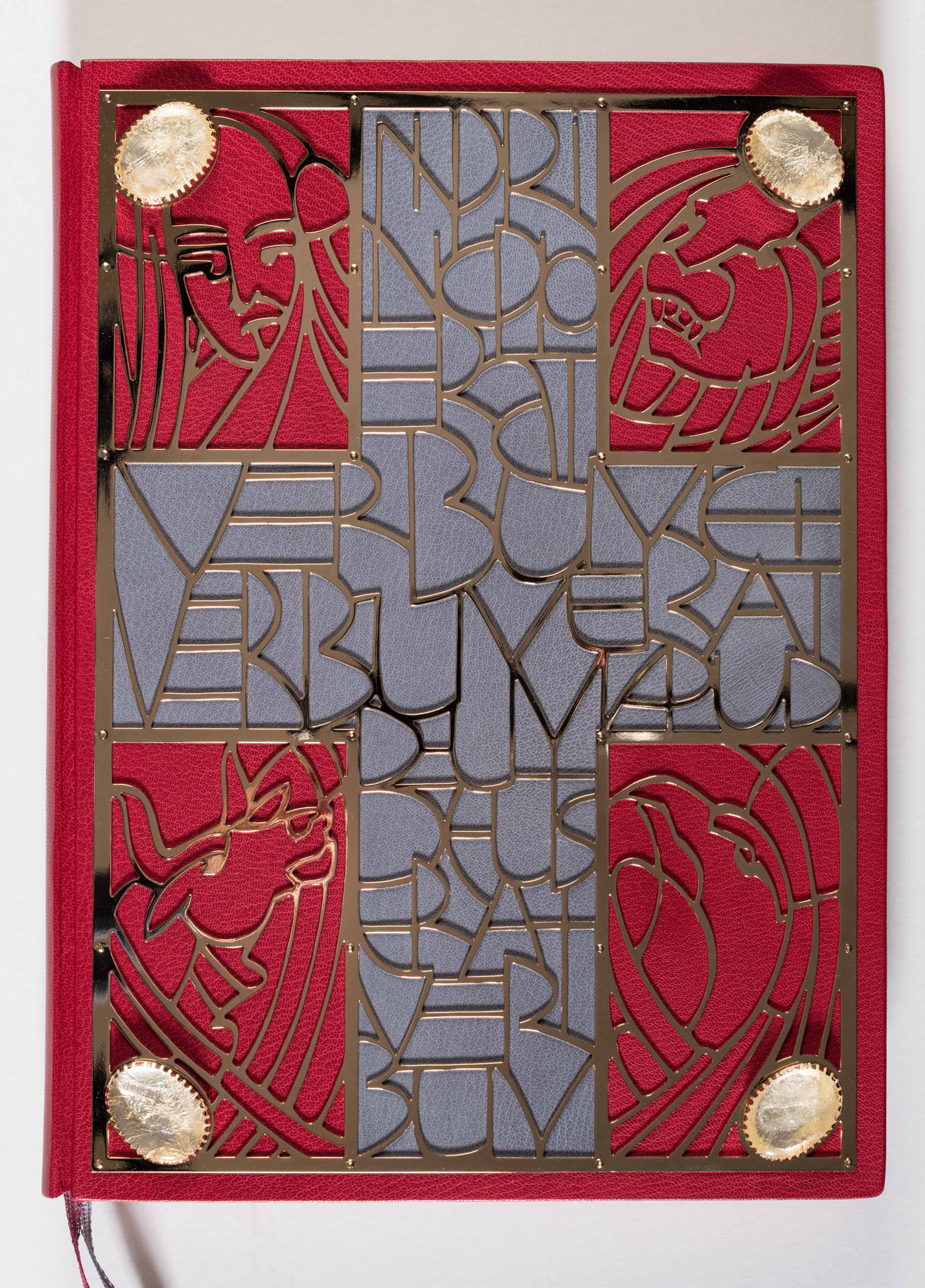
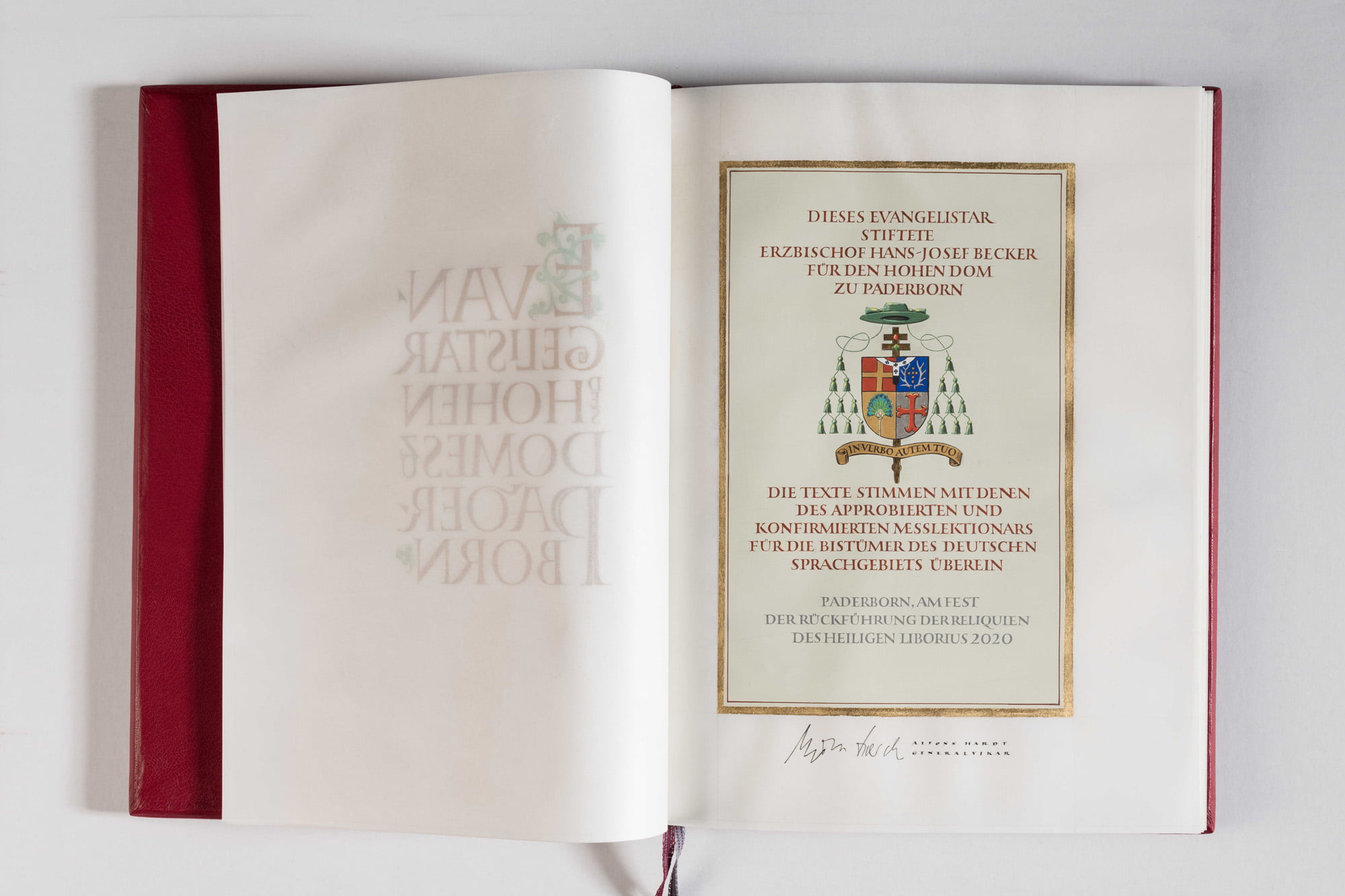
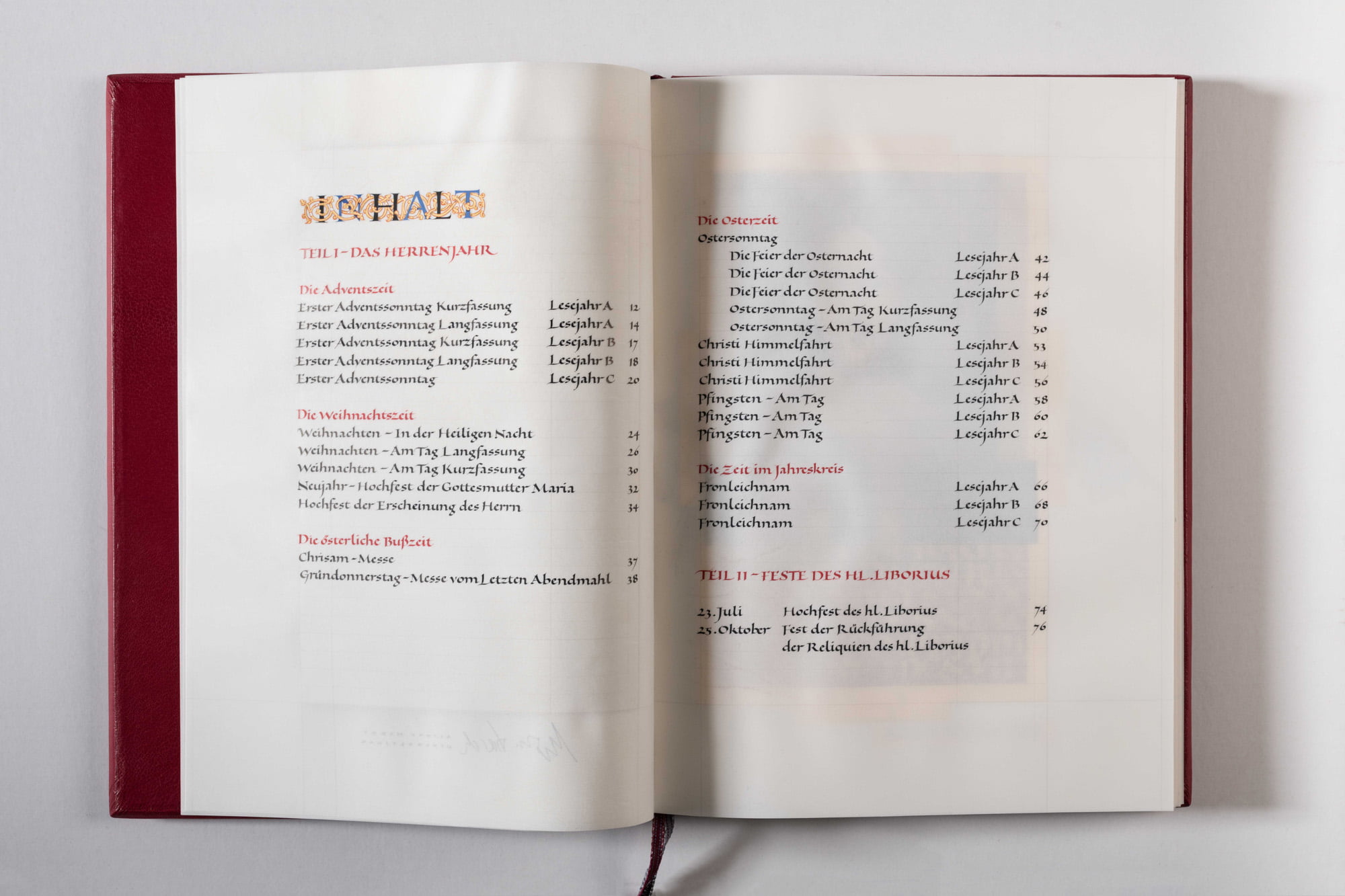

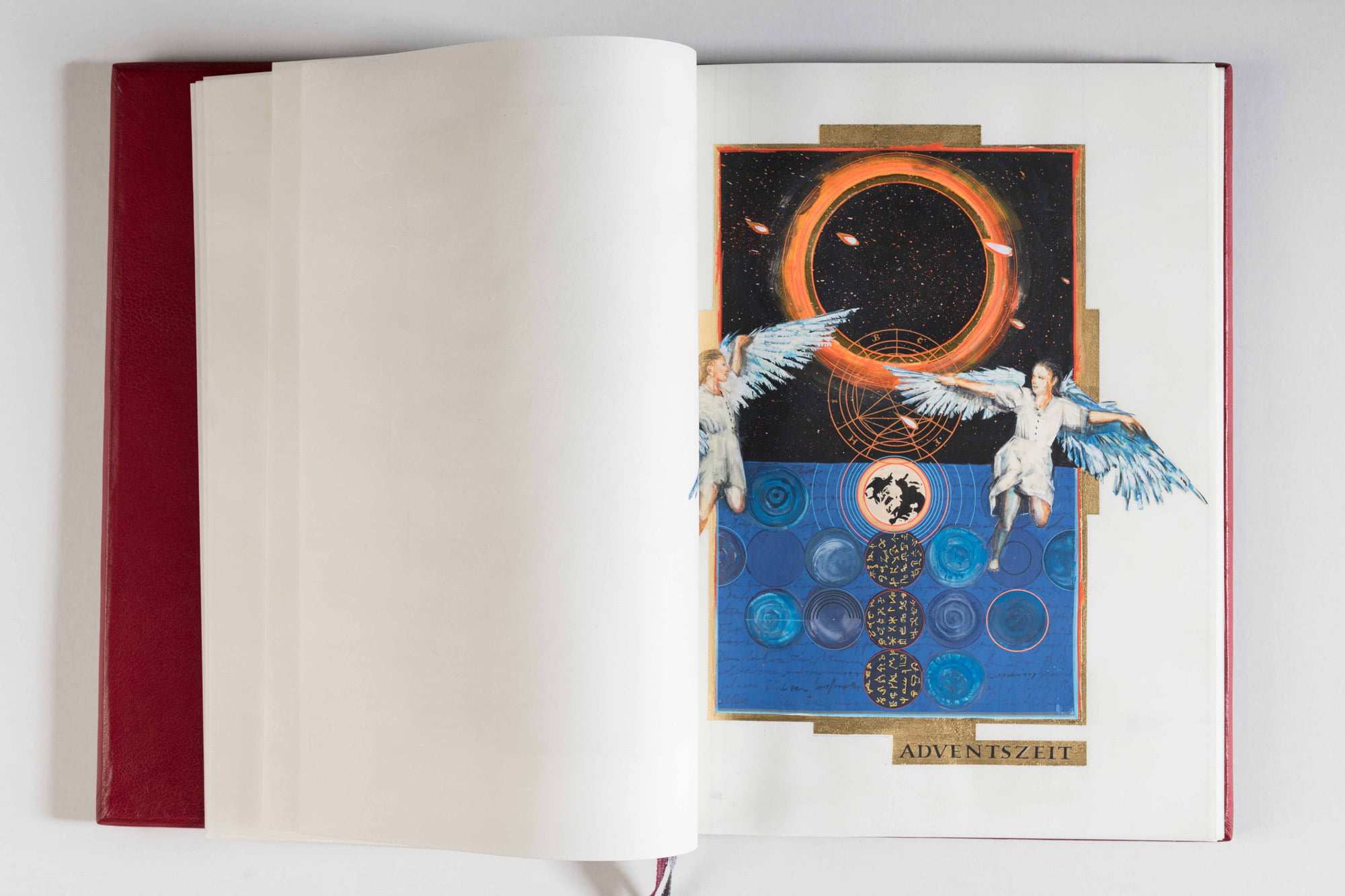
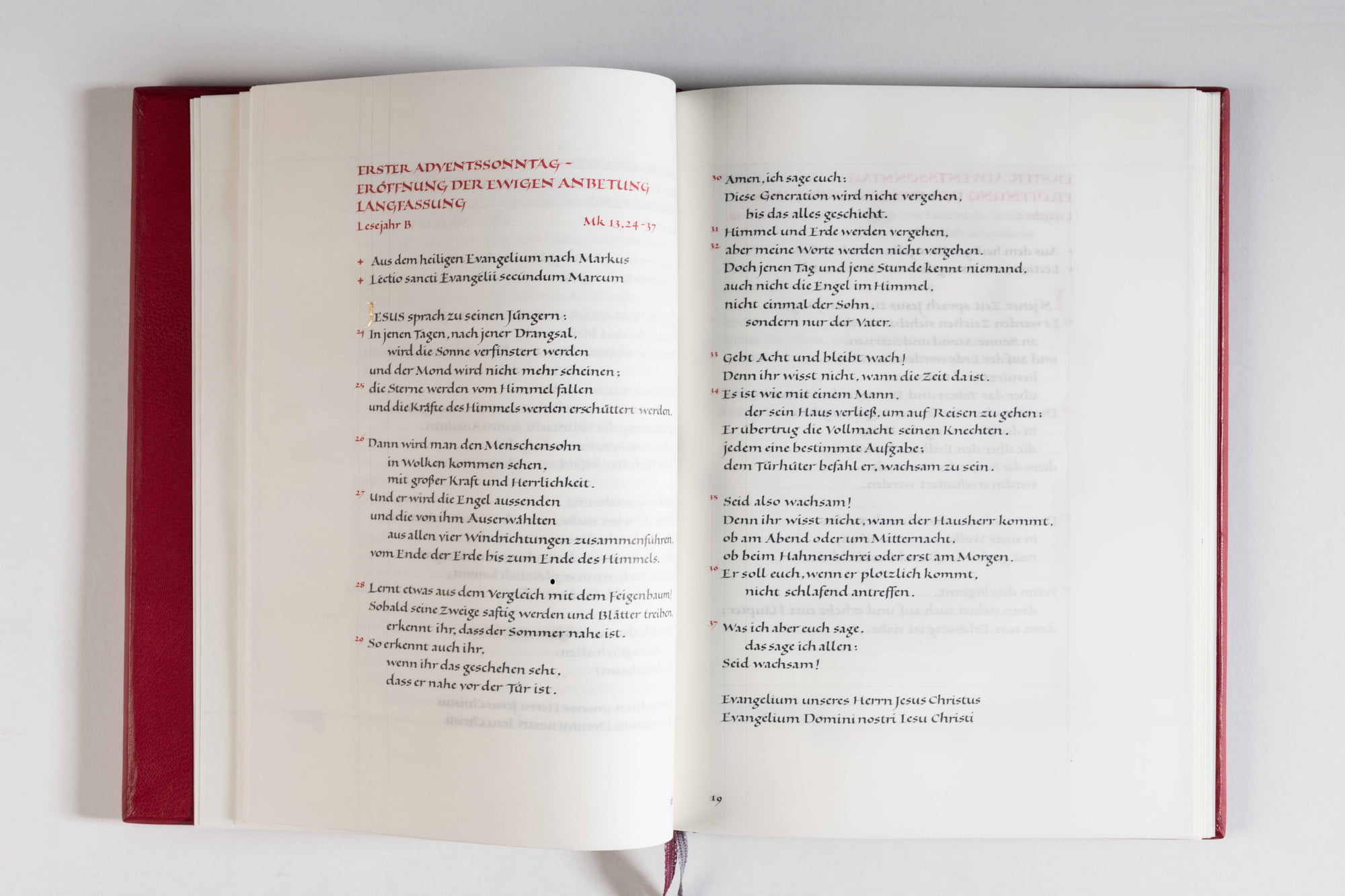
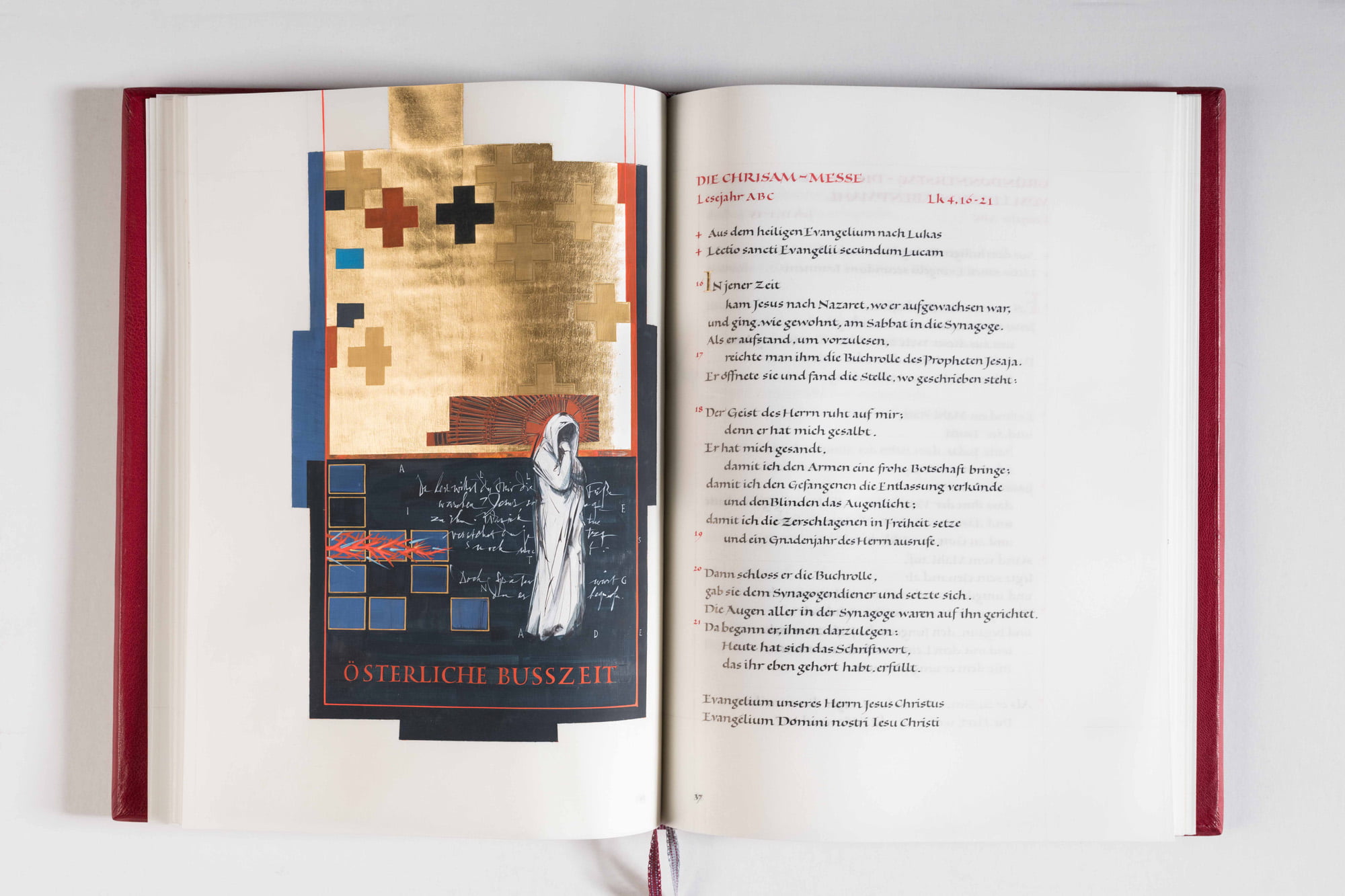


What a fantastic and admirable work. Hopefully it will be possible to see some day !
Nice, Brody. Ann would be pleased.
This is such a fine piece of work, Brody and I was delighted to help and therefore be a small part of its making.
You did more than you realize to help me, dearest Sue. Your guidance brought me back to the roots of our craft. This meant I could enjoy once again the serene process of putting one carefully, lovingly written letter after another. I will always be grateful to you for this.
You’re a miracle man, Brody, no less, excelling in just about everything you undertake. I was deeply moved by your work when I first saw it thirty years ago (I was shown your famous Hopkins scrolls at the very start of my calligraphic endeavors, so go figure what an impact that had on me!) and look, thirty years later you’re still at the top of your game, fearlessly taking on challenges and leaving us speechless. Your aesthetic sense and your manifold skills are dazzling, as so is your work ethic. Damn you, you make me feel so lazy and limited ! ;-)
This ist absolut great. And proof of how important the craft is… Only when we master the craft can art emerge. And it takes years. Amazing work.